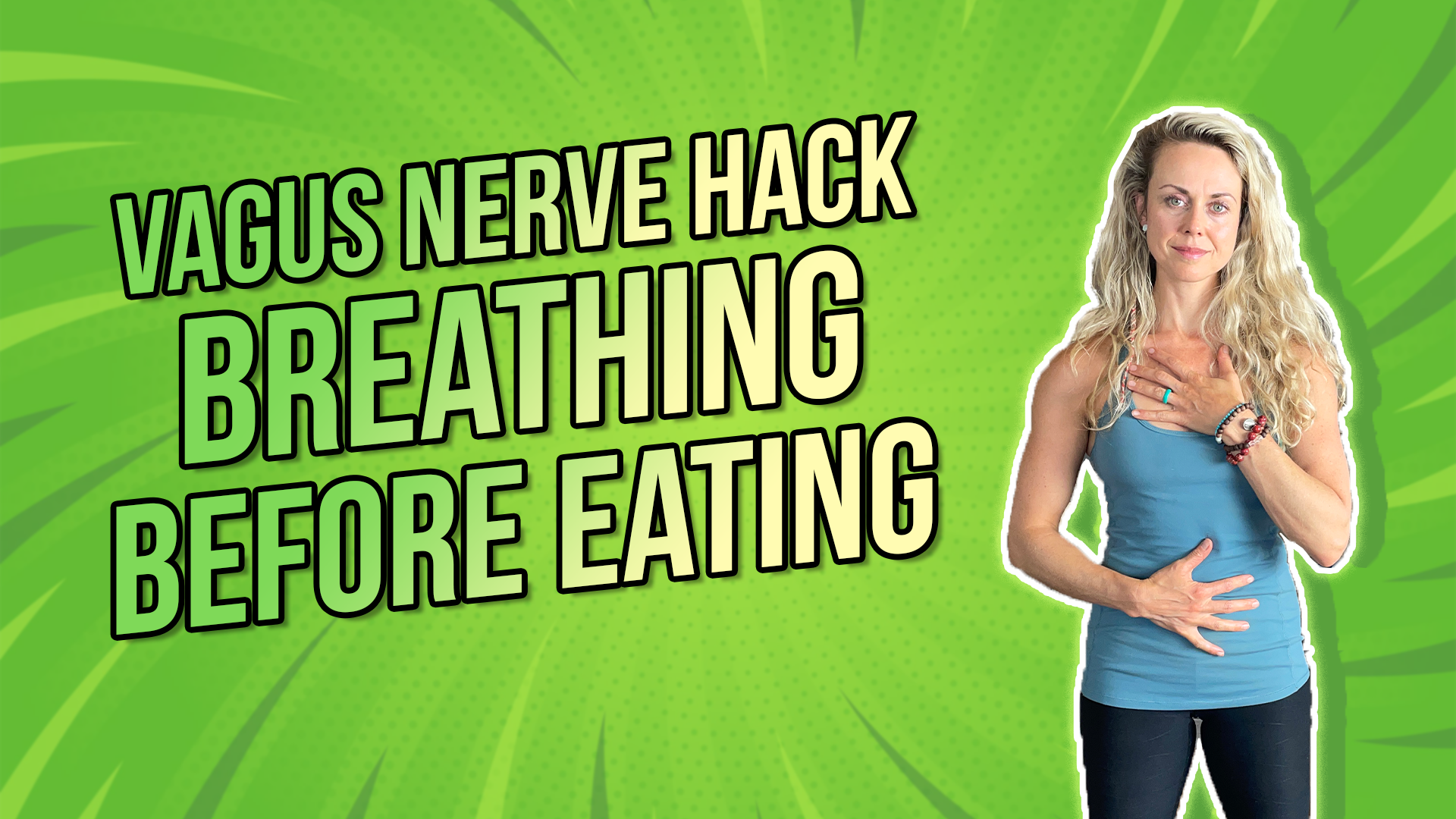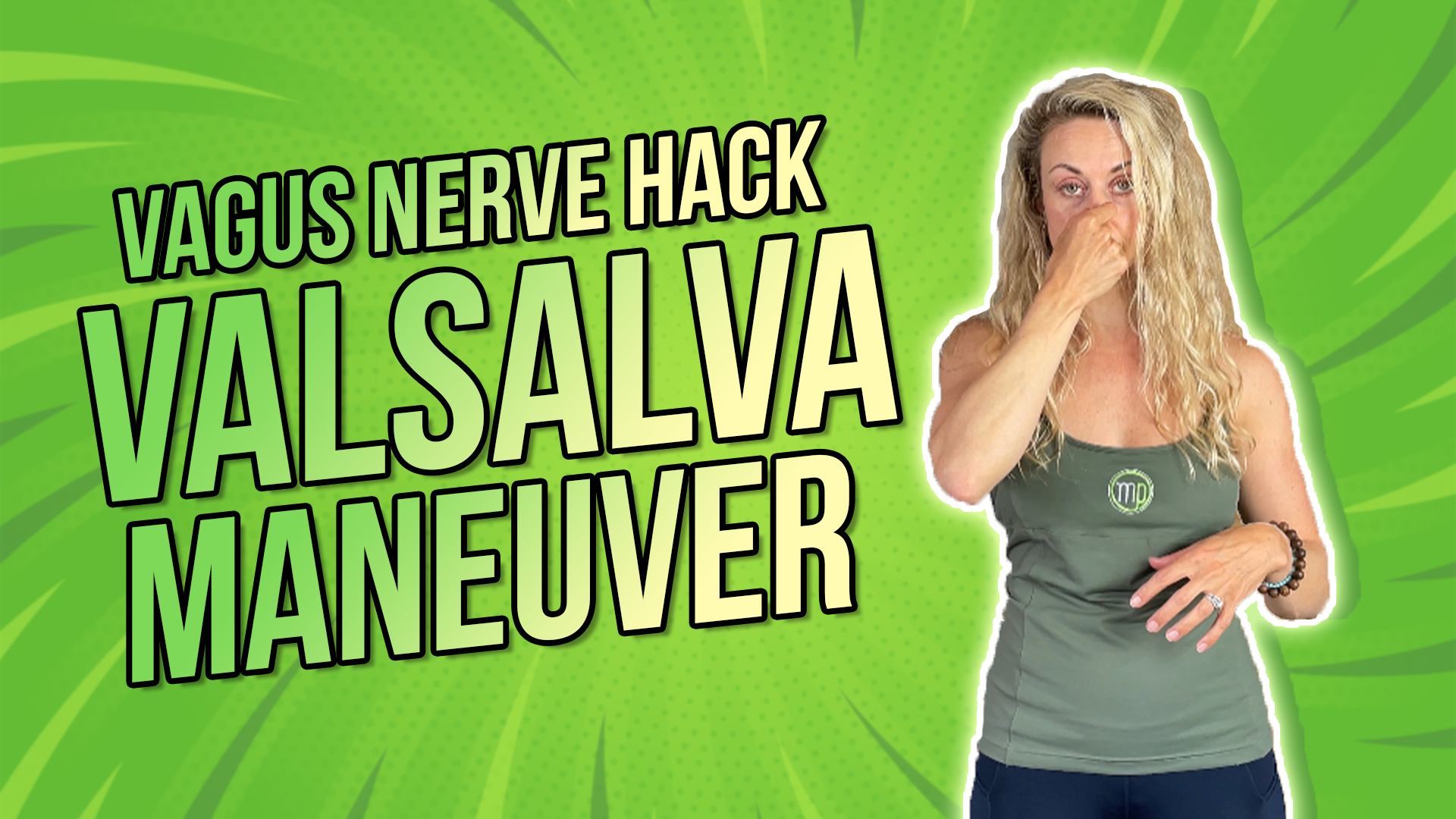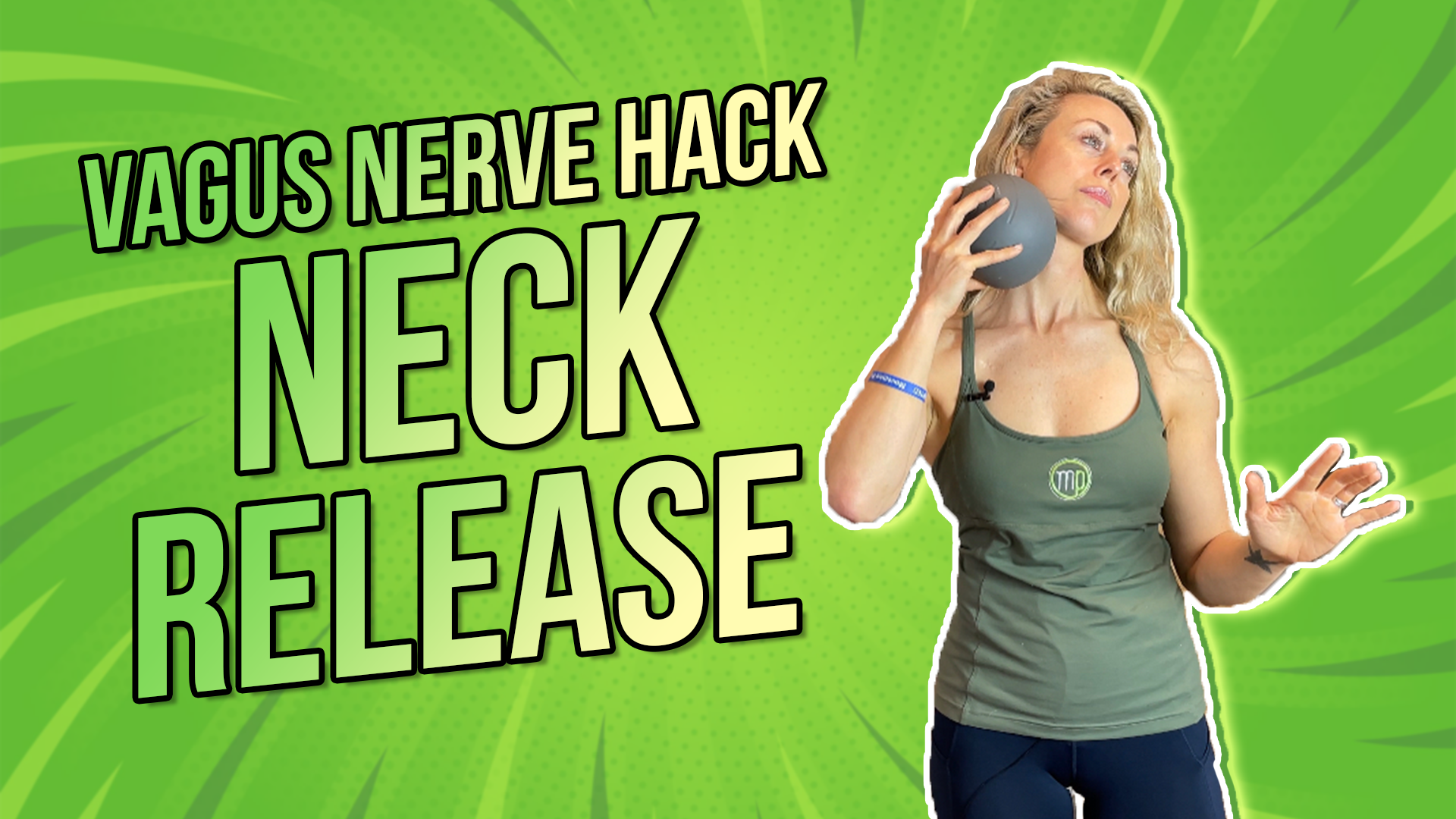If you are experiencing acid reflux, bloating, constipation, or poor digestion, then this vagus nerve hack is definitely for you.
In order to have optimal digestion, we need a lot of blood flow to our digestive tract. When we are in a fight or flight state, or a stressed state, the blood is moving away from our digestive system which will slow gastric motility.
Rather watch or listen than read?
Why perform diaphragmatic breathing?
Performing diaphragmatic breathing before you eat will stimulate the parasympathetic nervous system, thereby improving your digestion.
We breathe 20,000 to 25,000 times a day. So, when we are breathing from our neck and shoulder muscles and not allowing our ribcage to expand with each breath, our diaphragm becomes restricted. Since the esophagus passes through the diaphragm, it will become restricted as well, which can cause symptoms such as acid reflux.
We want to optimize the bi-directional communication between our gut and brain since 80% of that afferent information is coming from the gut up to the brain. We do this by diaphragmatically breathing.
This means when you inhale, you have a full 360 degrees of pressure through the abdomen, and when you exhale your belly button goes toward your spine. This will help to calm the nervous system down prior to eating by stimulating the vagus nerve and releasing acetylcholine to create a sense of calmness.
Simply taking 3-10 diaphragmatic breaths before you eat will help with your digestion tremendously.
It is important to calm the nervous system before eating so that we can truly rest and digest.
Reach out for a 15-minute FREE discovery session to see how we can help you on your journey.
For more content, make sure to subscribe to our YouTube channel here.
Other things that may interest you:
Chew Your Food To Heal Your Gut
What do your gut bacteria do? | 10 Functions of Gut Bacteria | Microbiome



